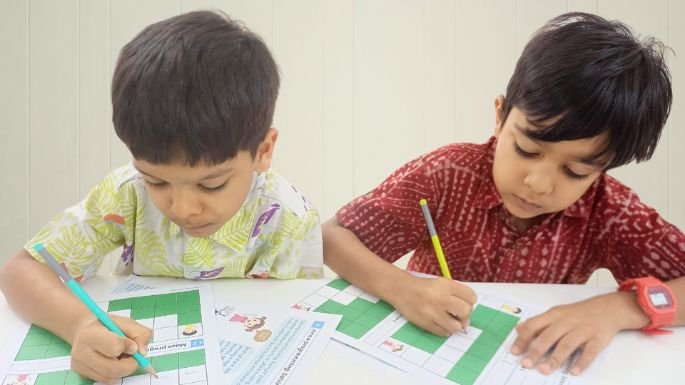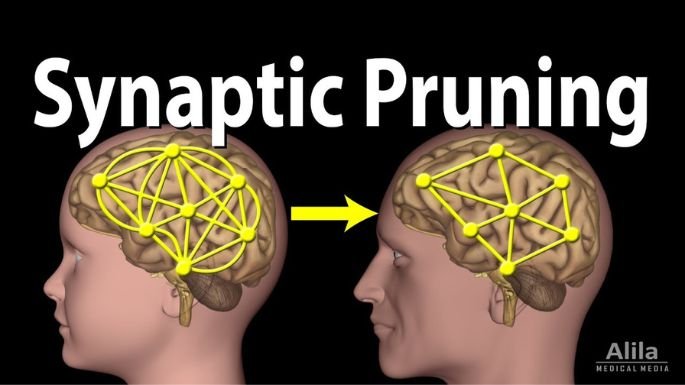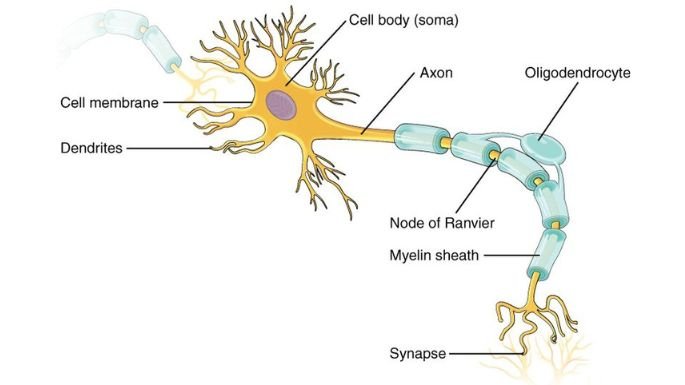

The early years of a child’s life are the period of remarkable brain development – that’s no more a secret. But understanding the science of how the brain grows and adapts can empower parents and educators to provide the best support during these formative years.
Here we are presenting the science of kids’ brain development in a very simplified way.
Let’s start with the two key terms.
Neuron: These are brain cells. They transmit information via electrical and chemical signals.
Synapses: The connections between neurons, allowing them to communicate.
A child, by age 2-3 will have twice as many synapses than an adult human brain would have. By age 6, the brain would have achieved almost 90% adult brain size.
So this age is highly important for the overall development of the child. The most important learning during this phase is Languages, motor skills, sensory skills and bonding.
Two important processes happen after that age.
- Pruning
- Myelination
Both of these start happening post age six but would be slow. A majority of the pruning and myelination happen between age 12 to 20. The teenage years!
Understanding the pruning
As children grow, their brains undergo a process called synaptic pruning, where unused or less active synapses are eliminated. This “use it or lose it” mechanism enhances the efficiency of neural networks, ensuring that frequently used connections are strengthened and less-used or unused connections (synapses) are removed.

Understanding myelination
Brain develops a fatty substance named myelin. The myelin forms a protective sheath (a cover) around axons of the neurones. This process is called myelination.
This process has two benefits.
- Protects brain cells.
- Improves efficiency.
You can relate this to an electric copper wire insulated with plastic insulation. Neurone axon is the copper wire and myelin is outer insulation.

The outcome of pruning and myelination
So now we know what myelination and pruning are. As mentioned earlier, it’s use it or lose it. Brain preserves the used synapses and makes them efficient, and will remove which is not much used.
Say you are using your brain for science or music, the brain portion associated with those skills will be preserved and made more efficient. That’s why we see some people being able to adapt some skills even at later stages of life. Most probably they have worked on a related skill during the phase of pruning and myelination, broadly age 6 to 20.
For example
- A child doing good in chess may better adapt to computer programming later.
- A child who completes a project using a DIY kit is more likely to finish “task-on-hand” as an adult, because her brain has strengthened the synapse for execution ability.
Pro tip: Why not work on your ability to learn new skills during this age?
Now, What affects pruning and myelination?
Two things:
- Stress
- Experiences
The impact of stress on brain development
Long term & sustained stresses such as severe family conflicts, parental disputes, sustained bullying or abuse may adversely affect the neurone development, pruning and Myelination processes. Resulting in under developed brain, poor decision making, lack of confidence, fear, too much of aggression and other negative behaviour.
Acute short term stresses such as failing an exam, losing a tournament, falling from bicycle, or getting dropped off a team can help promote resilience and adaptive coping mechanisms when managed appropriately by the kids and supported by adults.
When children are overly shielded from all failure or challenge, the brain may not develop (say preserve and keep efficient associated brain portion) the skills that make a person resilient and decisive.
Impact of experiences on brain development
As short term and moderate stress causing experiences helps a person develop positively, the enriching experiences immensely help brain developing and preserving the synapses during pruning and myelination process.
Beneficial experiences
- Free play: Unstructured and without instructors.
- Creative play: Creating and playing with toys, DIY projects, drawing, building, sports, storytelling, quizzes and puzzles, and all sorts of performing and visual arts stimulate various brain regions.
- Social interaction: Meeting new people, dealing with strangers (in a controlled environment subject to child’s age and surroundings), going to a nearby shop alone, travelling alone etc enhances communication skills and empathy.
- Exploration: Encouraging curiosity through experiments, project making, nature walk, trekking, role plays, internships, trying with entrepreneurship etc fosters cognitive growth.
One last thing, What harms brain development?
Excessive passive screen time like endless scrolling, binge watching and gaming do not offer any experience, they just offer information. Often, wrong information, misinformation, unworthy information and harmful information. And remember that neuronal development, pruning and myelination is going on between 6 to 20. You want it to go wrong?
Enrich your kids’ brain with experiences and positive stresses. Take care!

